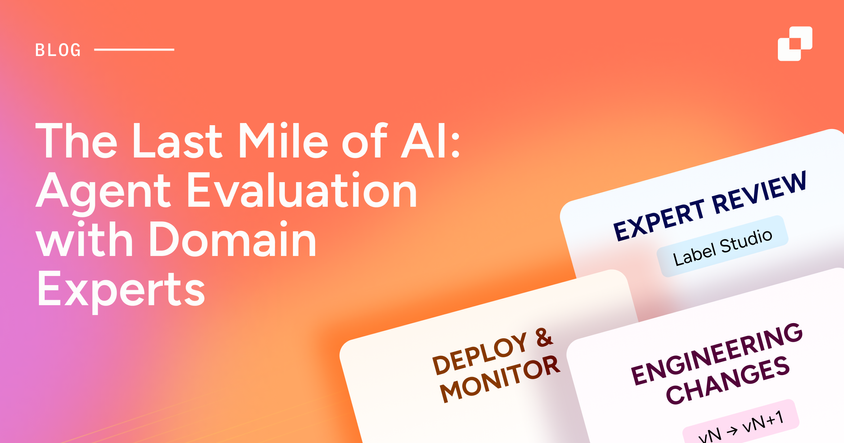Build vs. Buy in the Age of Generative AI: Lessons from MIT’s 95% Failure Stat

The 95% Failure Problem Isn’t About the Models
95% of GenAI pilots don’t fail randomly. They fail predictably, because enterprises confuse procurement with strategy. They buy when they should build, or build when they should buy. The result is pilots that stall in the lab instead of systems that scale in production.
The instinct is to blame the models, but that’s not the core issue. The real failure is organizational: projects are mismatched to the wrong deployment strategy.
When to Buy: Narrow, Proven Use Cases
Successful deployments cluster around tasks where outputs are bounded and easy to test.
- Code generation → outputs are constrained, and compilers provide instant validation.
- Media and content generation → results can be visually checked in seconds, and the cost of mistakes is low. A bad draft or image isn’t catastrophic, it just gets edited or replaced.
These use cases map well to off-the-shelf products like coding assistants, document drafting tools, and other copilots. Buying makes sense when:
- ROI is obvious and immediate.
- Context requirements are minimal.
- Feedback loops are simple and cheap.
- Mistakes are acceptable, and edge cases are limited.
That’s why developer copilots and writing assistants thrive. They succeed in domains where the system can validate itself.
When to Build: Complex, Context-Rich Workflows
The 95% of failed pilots share one trait: context is the bottleneck. Customer service, healthcare, finance, law, these are domains where judgment matters more than output volume, and where the cost of a single mistake is catastrophic.
Generic copilots collapse under that pressure. They forget context and force humans to re-supply it. They don’t learn from corrections, so the same errors repeat. And in industries where edge cases are the norm, not the exception, they snap. Unlike low-stakes domains, mistakes here aren’t tolerable, they come with regulatory, financial, or human consequences.
The failures look familiar: a “legal copilot” drafts contracts that lawyers rewrite from scratch because precedent and nuance aren’t captured. A “healthcare assistant” produces advice that sounds plausible, but crumbles in compliance review. These aren’t bugs. They’re structural mismatches between generic tools and high-stakes workflows.
That’s why building is unavoidable in these environments. You’re not building because the model is weak, you’re building the infrastructure that makes it reliable:
- Encode expertise → Capture domain knowledge that lives only inside your organization. Vendor models won’t have it, and without it, copilots collapse.
- Make judgment reusable → Human corrections can’t vanish into chat logs. They must become structured signals, fueling continuous retraining. This is how you turn feedback into a data flywheel — and one of the few defensible moats in AI.
- Prove trustworthiness → Compliance demands auditability, reproducible states, and benchmarks. Regulators and executives won’t accept “it worked in a demo.”
- Adapt continuously → Edge cases never stop coming. Systems need feedback loops that don’t just patch today’s error but keep tuning as new ones emerge.
And the bar is only getting higher. Today’s copilots already strain under context, but the next wave, autonomous agents orchestrating entire workflows across finance, procurement, and compliance, will multiply the demands. If you don’t have the scaffolding to capture feedback, encode context, and prove reliability, agents will spend more time asking for data than delivering value.
When error tolerance is low and context is everything, you can’t buy your way out. Buying gets you pilots. Building gets you production.
What Building Really Requires
Building isn’t about reinventing models. It’s about putting in place the scaffolding that makes rented intelligence reliable. The enterprises that escape the 95% failure rate treat feedback, context, evaluation, and governance as infrastructure:
| Pillar | What It Means | Industry Example | Why It Matters |
| Feedback capture | Human oversight isn’t just QA, it generates structured signals that fuel retraining. | In healthcare, human reviewers scoring factual accuracy and evidence support create benchmarks that guide safe model deployment. | Feedback loops become data engines, not dead ends. |
| Context encoding | Turning tacit expertise into reusable inputs instead of losing it in chats or documents. | In energy and manufacturing, engineers labeling anomalies translate domain intuition into structured signals for predictive systems. | Without encoding, copilots forget; with it, they learn. |
| Evaluation & Benchmarks | Systematic measurement across metrics, regression suites, and dashboards. | In enterprise software, structured review pipelines doubled throughput and reduced rework by making evaluation repeatable. | Anecdotes don’t scale; benchmarks do. |
| Governance | Traceability, audit logs, reproducible states, compliance as infrastructure, not paperwork. | In finance and regulated health, workflows with auditability and role-based controls survive compliance review. | Without governance, production dies at the regulator’s desk. |
This is the difference between demos that impress and systems that last. Building isn’t reinventing AI, it’s building the rails that let AI compound learning over time.
The Missing Role: The AI Product Manager
All of the above problems share the same missing link: an AI PM. They’re the ones who can decide when to buy narrow copilots and when to build feedback-driven systems, because they understand the requirements at a deeper level and connect business needs directly to AI strategy.
SaaS PMs think in features and releases: ship, measure adoption, move on. That playbook collapses in AI. Adoption means nothing if the system drifts, forgets context, or can’t prove trustworthiness.
The AI PM flips the script. They design feedback infrastructure, not feature roadmaps. They treat human judgment as a renewable resource, not wasted clicks. Their job is to make sure every correction becomes signal, every edge case becomes a benchmark, and every system compounds learning instead of leaking it.
| Normal SaaS PM | AI PM |
| Ships features, runs experiments, tracks adoption | Designs feedback flywheels; ensures human judgment turns into training and evaluation data |
| “What’s the roadmap?” | “What’s the learning loop?” (where the data comes from, how it’s evaluated, how drift is corrected) |
| Optimizes for adoption | Optimizes for trust and reliability (does the system improve with each round of feedback?) |
| Thinks in releases | Thinks in training cycles and drift measures |
| Defines success with usage, CSAT, NPS | Defines success with benchmarks, evaluation metrics, error rates |
| Ships integrations to connect to data sources | Designs context ingestion so the model pulls the right data, in the right format, at the right time |
Without this role, enterprises default to shiny copilots that collapse in compliance review or pilots that die in adoption purgatory. With it, feedback becomes infrastructure, and GenAI stops being rented intelligence and starts becoming owned expertise.
Prediction: In the next wave of GenAI, the AI PM will be as indispensable as the CIO.
Closing: Two Strategies, One Goal
Enterprises succeed with GenAI when they stop pretending one approach will solve everything. The winning play is always dual:
- Buy copilots for narrow, high-ROI use cases, code generation, drafting, media workflows, where outputs are bounded and validation is almost free.
- Build feedback-driven systems where workflows are messy, context-heavy, and unforgiving, in customer service, healthcare, finance, legal, where the cost of error is too high to outsource.
The MIT report shows what happens when enterprises skip this choice: 95% of pilots fail. Not because the models are bad, but because organizations confuse procurement with strategy. They sign licenses when what they need is infrastructure.
GenAI doesn’t fail for lack of horsepower. It fails when enterprises force-fit generic copilots into workflows that demand judgment, traceability, and context. The lesson is simple: stop buying more tools and start owning your feedback loops. That’s the only way to turn rented intelligence into durable capability.


